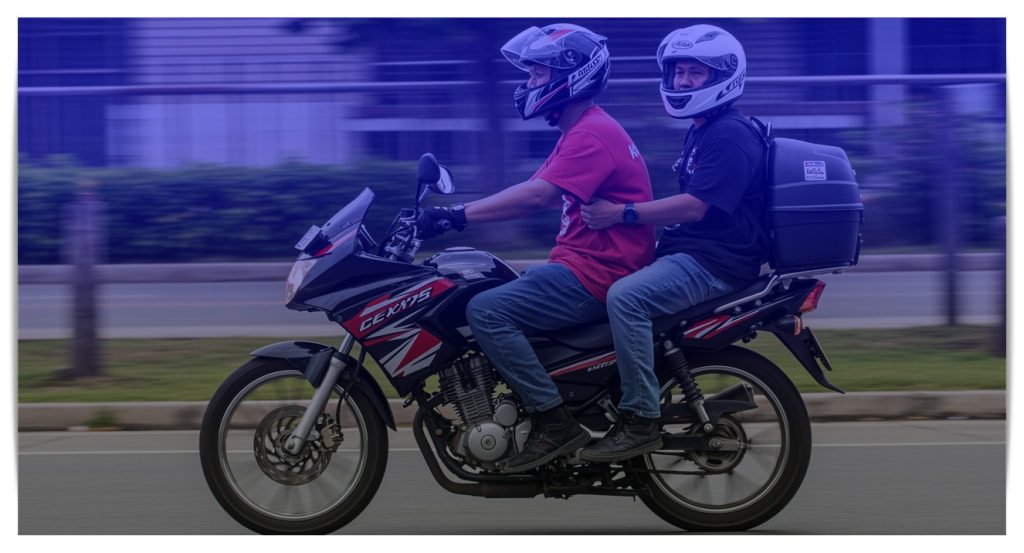Motorcycle backriding is a common way to travel, especially in traffic-heavy areas.
It is fast, fuel-efficient, and convenient for short trips and daily errands.
But it comes with strict rules to keep both the rider and backrider safe.
The Land Transportation Office (LTO) has guidelines every motorcycle user must follow.
These include rules on helmets, clothing, number of passengers, and health safety.
If these rules are ignored, fines can go from P500 up to P5,000 depending on the violation.

The Helmet Rule: No Exceptions
When riding a motorcycle, both the driver and the backrider must wear a helmet.
The helmet should meet the safety standards approved by the Bureau of Product Standards.
This means it must have a PS (Philippine Standard) mark or an ICC (Import Commodity Clearance) sticker.
Wearing a non-standard helmet or not wearing one at all is a clear violation.
For first-time violators, the fine is P1,500.
Repeat offenders can be fined up to P5,000 and risk losing their license.
This rule applies no matter how short your trip is or how well you know the driver.
We know helmets can feel hot or bulky, but they save lives during accidents.
If you’re a parent, partner, or friend riding with someone, wearing the right helmet is a sign of care—for yourself and your loved one.
Dress Code for Riders and Backriders
When riding a motorcycle, open-toe footwear is not allowed.
This includes slippers, sandals, and flip-flops.
The LTO requires all riders, including backriders, to wear closed shoes.
This rule helps prevent foot injuries, especially if the motorcycle tips or slides.
While not mandatory, the LTO also advises wearing jackets, gloves, and long pants for extra protection.
If you’re headed to the market, church, or work, remember that your outfit matters not just for style, but also for safety.
A P500 fine awaits anyone caught riding without proper footwear.
So before you hop on, check your shoes.
It’s a small detail that could save you from injury or a costly penalty.
One Backrider Only: The Passenger Limit
Only one backrider is allowed on a motorcycle.
No kids in between. No extra passenger behind.
The motorcycle should not carry extra people or cargo beyond what is allowed.
Any more than one passenger is considered overloading, which is a safety risk.
The backrider must sit firmly and properly, with their feet resting on the footpegs.
The motorcycle must not be modified to allow more riders or an extended seat.
Even if you’re just going a few blocks, the rule stays the same.
Violating this limit can result in a fine of P2,000 or more, depending on the situation.
For families with kids, this can be hard—but safety comes first.
Better to take turns or find another option than risk getting hurt or fined.
What Happens If You Break the Rules?
Fines and penalties from the LTO can pile up fast.
Here’s a quick look at what you may face if you’re caught violating backriding rules:
- No helmet: P1,500 for the first offense, up to P5,000 for repeat violations
- Improper footwear: P500 minimum
- Overloading: P2,000 or more
- Backriding during health restrictions: Depends on LGU, but can be charged as overloading
Aside from the cost, repeated violations can affect your license.
You may be flagged in the LTO system and have trouble renewing your registration or license later.
These rules may feel strict, but they are in place to keep people alive and roads safer.
Exceptions and Special Cases
Not all rules apply in the same way for every situation.
Here are a few cases where backriding may be allowed or handled differently:
- Partners living in the same house: Allowed to backride even during some quarantine levels
- Emergency travel: May be excused in some cases if proven valid
- Work-related travel: Special permits may be granted if the backrider is a co-worker and follows health protocols
Even with exceptions, it’s still best to carry ID and proof of your relationship if needed.
Rules can change depending on city ordinances or national guidelines.
To stay updated, follow announcements from the LTO and your LGU’s official pages.
Why These Rules Matter
Motorcycles are exposed vehicles.
Unlike cars, they don’t have seatbelts or airbags.
That’s why every safety rule matters.
A helmet can protect your brain during a crash.
Closed shoes can keep your feet from being scraped or broken.
Limiting to one backrider avoids extra weight that could affect balance.
Following these simple rules can help prevent pain, injuries, or even death.
Think of it not as a hassle but as part of being a responsible rider or passenger.
Being safe helps you get to your loved ones, work, or school without worry.
And that’s worth every effort.
READ ALSO: 9 Motorcycle Safety Tips Every Pinoy Rider Should Know
Quick Recap: Must-Follow Rules for Motorcycle Backriding
- Wear an LTO-approved helmet with a PS or ICC mark
- Use closed shoes only
- Only one backrider is allowed
- Follow proper seating and use of footrests
- Check if health rules allow you to ride together
- Stay updated with new LTO or LGU guidelines
- Carry valid ID, especially during checkpoints
- Pay fines on time to avoid more trouble
Frequently Asked Questions (FAQs)
1. Can a child ride as a backrider on a motorcycle?
No. Children are not allowed as backriders unless they can reach the footpegs and sit properly without assistance.
2. Is wearing a helmet without a PS or ICC sticker allowed?
No. Helmets must have the correct certification stickers or they are considered invalid.
3. What happens if the motorcycle has a custom seat that fits two backriders?
This is still not allowed. Only one backrider is legal, even with modified seats.
4. Can I ride with a friend who is not a family member?
Yes, but only if current health rules allow it. During strict alerts or quarantines, it may be restricted.